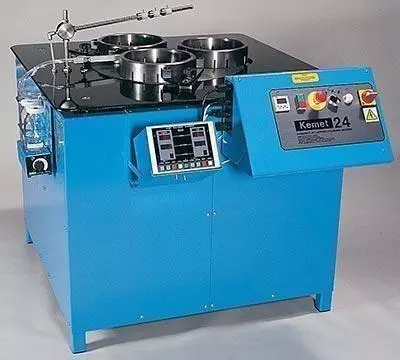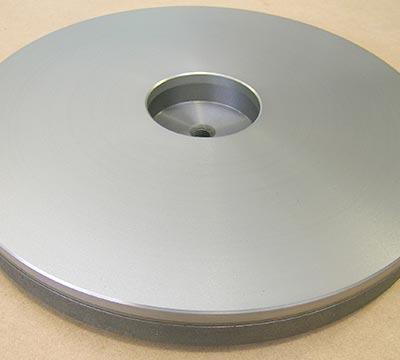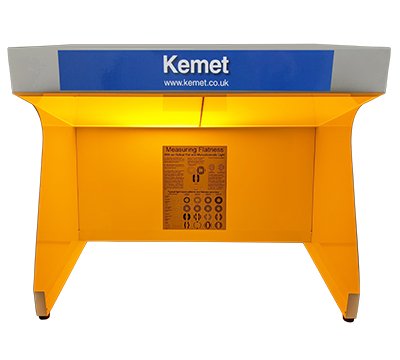Mechanical Seal Face Surface Finishing
Mechanical seals are an essential component in various industries that require fluid transfer or containment. These seals are designed to prevent leakage by providing a barrier between two surfaces, usually a stationary and a rotating one. Mechanical seals work by creating a tight seal between the two surfaces, preventing fluid from leaking out. One critical part of the mechanical seal is the seal face, which is in constant contact with the other surface. Manufacturing high-quality seal faces is, therefore, essential to ensure the efficient operation of mechanical seals.
There are various types of mechanical seal faces, including carbon, tungsten carbide, ceramic, silicon carbide, chrome oxide, stellite, ni-resist, and phosphor bronze. Each type of seal face has its unique characteristics, making it suitable for specific applications. For example, tungsten carbide is excellent for handling abrasive materials, while silicon carbide is ideal for handling corrosive materials.
Reconditioning and Manufacturing Mechanical Seals
To manufacture mechanical seal faces, machine lapping is the preferred method. This process involves using an abrasive material to remove material from the surface of the seal face until it is flat and smooth. Kemet Lapping Systems are widely used in both the manufacturing and reconditioning of mechanical seal faces. These systems are suitable for use with various machines, including bench-mounted, free-standing, and hand lapping systems.
The size of the lapping machine used is typically determined by the largest seal to be lapped. For instance, a Kemet 15 machine can lap seals up to approximately 125mm (5”) in diameter, while a Kemet 24 machine is required for seals up to 200mm (8”) in diameter. By following the appropriate procedures, it is possible to produce high-quality, reflective surfaces that are flat to less than 2LB (0.0006mm).
Traditional abrasive materials, such as aluminum oxide and silicon carbide, are not suitable for lapping many of the materials used to manufacture mechanical seals. Fortunately, Kemet's composite lapping plate, combined with a diamond slurry, is an effective alternative. This combination provides a good cutting rate and a highly reflective surface finish, eliminating the need for a secondary polishing stage.
Kemet Flat Lapping Systems are available in various sizes, with machines up to 72” in diameter. However, for most seal repair workshops, 15” or 24” machines are adequate. Any conventional lapping machine can be converted to a Kemet Diamond System by replacing the existing plate with a suitable Kemet Plate and fitting the appropriate Kemet Spray System. The lapping/polishing process is fully automatic once the machine is converted, with existing control rings still in use.
One significant advantage of using the Kemet System is that it requires minimal diamond slurry usage, reducing the amount of waste material generated. This is in contrast to traditional lapping methods that require high consumable usage, resulting in significant waste disposal issues.
The Key to Producing Flat Mechanical Seals
Flatness is an essential aspect when it comes to manufacturing flat mechanical seals. To achieve this, flat lapping plates are used. However, the process of producing flat lapping plates is not easy, and as such, it is important to regularly check plate flatness. This is the most important skill to master when operating a flat lapping machine. When lapping mechanical seals and valves, certain settings are required to ensure that the process runs smoothly. The typical Kemet dispenser settings when lapping mechanical seals and valves are as follows:
| 15” machine | 24” machine | ||
|---|---|---|---|
| Diamond | Fluid | Diamond | Fluid |
| 2 seconds Duration 20 seconds Interval | 1 second Duration 120 seconds Interval | 2 seconds Duration 20 seconds Interval | 2 seconds Duration 40 seconds Interval |
Both individual air regulators at the back of the Diamond Dispenser should be set to 1/2bar (7.5 PSI). Before lapping, the lapping plate should be charged for 10 minutes by running the machine and applying the above spray quantities.
It is crucial to ensure that the lapping plate is neither too wet nor too dry when lapping or polishing. When the plate is excessively wet, lubricant floods the diamond and significantly reduces the rate of stock removal. Conversely, if the plate is too dry, the parts can come into direct contact with the lapping plate, and this will negatively affect the resulting surface finish and cause the plate to heat up.
To lap seals, they should be placed inside the machine's control rings and pressure applied. If multiple parts are to be lapped inside the same conditioning ring, they must be the same thickness (+/- 0.5mm). To keep the parts in position during lapping, a work-holder (sometimes called a nest) should be manufactured. This is typically a 3mm disc of Tufnell with the profile of the parts to be lapped machined into it. Alternatively, the pressure weights themselves can be faced with a Kemet Facing Kit. This special material has non-skid properties that hold the parts in position during lapping without the need for a work-holder.
Single seals may be allowed to run freely inside a control ring. Still, it is important to apply a weight to obtain optimum stock removal. This weight should be balanced. An ideal weight is a large steel ball that can simply be placed on top of the seal. To prevent tracking on the lapping plate, it is suggested to place a rubber band around individual seals, which provides them with the necessary traction within the control rings.
Different materials require different pressure applications. The suggested approximate pressure applications are:
| Carbon 100g/cm² | Tungsten Carbide 300g/cm² | Silicon Carbide 200g/Cm² | Ceramic 600g/Cm² |
| Nickel Iron 200g/Cm² | Stellite 200g/Cm² | Chrome Oxide 300g/Cm² | Spray Coated 200g/Cm² |
In the event that a lapping machine is relatively small and a large seal needs to be lapped, one option is to replace the control ring with the seal, allowing it to run in the Roller Yoke Assembly.
Creating a Convex Surface on a Mechanical Seal Face
During the lapping process, the workpiece surface will mirror the shape of the lapping plate, which must be flat to ensure a flat surface finish. However, to create a convex surface, the lapping plate must be conditioned to be concave, so the workpiece will mirror the desired convex shape.
To create a concave lapping plate, the conditioning rings must be positioned towards the center of the plate. Kemox 0400-S, or a suitable conventional abrasive slurry, can then be used to generate the concavity. Diamond slurry should not be used for this step. The amount of concavity required will depend on the convexity required and the size and surface area of the parts to be lapped.
Once the concavity has been generated, the plate and rings must be cleaned, and the plate charged with the appropriate Kemet diamond slurry for the application. The part can then be lapped as normal inside the conditioning ring. The flatness of the part should be checked, and the plate shape adjusted as necessary.
Creating the concavity can take a long time, so in production, it is recommended to keep a plate specifically for this convex face generation. Ideally, a dedicated set of conditioning rings would be kept with the plate. Kemet offers the calculation of the exact plate shape required for concave/convex lapping operations, as well as contract lapping services and free testing.
Lapping and Polishing Carbon for Spring Loaded Seals
Carbon is a widely used material for manufacturing mechanical seals due to its excellent chemical and thermal properties. Lapping and polishing are two critical processes used to obtain high-precision surfaces for such seals.
The aim of this study was to identify a suitable lapping process for spring-loaded carbon seals. Four carbon seals were selected for the test. The lapping machine used for this study was a Kemet 15 lapping machine.
The lapping process consisted of two stages. In the first stage, the carbon seals were lapped for 10 minutes on the diamond lapping machine using Kemet Liquid diamond 3-micron type K std abrasive. In the second stage, the parts were hand-lapped on a Kemet Copper plate until they were polished. The hand-lapping process took up to 30 seconds. It should be noted that as the parts were spring-loaded, they had to be placed on top of an optical flat to get a light band reading. This was done to ensure that the surface finish was within the required specifications.
| Lapping Process for Carbon | |||
|---|---|---|---|
| Stage | Plate/cloth type | Abrasive type/grade | Process time |
| 1 | Kemet Copper | Kemet Liquid diamond 3 micron type k std | 10 minutes |





